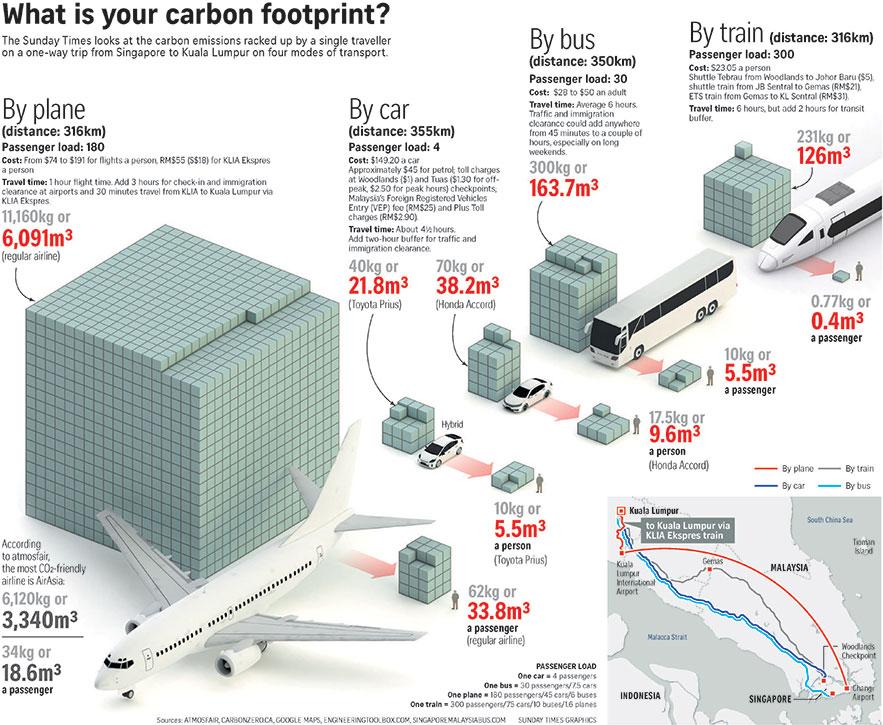Flight shaming has taken off in Europe, where travellers are now reluctant to boast about their globetrotting holidays.
After two decades of a budget-air-travel boom, eco-conscious Europeans are opting for slower modes of travel.
Trains, buses and ferries have come back in vogue as they seek to reduce their travel carbon footprint.
But which mode of transport is the most carbon-efficient?
The Sunday Times crunches the numbers for the popular Singapore-Kuala Lumpur route, which allows for comparisons across land and air.
And the winner is? Well, it depends on what you are looking for.
While air travel technically was the fastest, the fact that Kuala Lumpur International Airport is located in Sepang and the early check-in can add as much as three hours to the total travel time.
One also needs to get on another ride of 35 minutes or longer - on either car, bus or train - to get from the airport to Kuala Lumpur city.
Train travel leaves the smallest footprint by far - 0.77kg a traveller, assuming a full passenger load, versus the next nearest contenders - 10kg for a bus passenger or one of four passengers in a Toyota Prius.
But keep in mind that there is no longer a direct train service from Singapore to Kuala Lumpur.
This green way to travel also involves the most hassle as you will need to switch among three train services and navigate the tangled website of KTM to get your tickets.
For a good compromise between green-friendly concerns and convenience, travelling by coach is the way to go.
Caveats to the statistics: Getting accurate comparisons per passenger across different modes is tricky as many factors contribute to carbon emissions, ranging from fuel type and speed to occupancy rate and load.
There are many carbon-emission calculators online, but most do not offer the option of calculating across different modes of transport.

The Sunday Times used German non-profit website atmosfair to calculate flight carbon emissions as the organisation tracks green-friendly airlines with an Airline Index.
Carbon emissions for cars and buses came from Canadian website Carbonzero, which allows one to specify the year and make of cars for more accurate measurements, while train emission was calculated with engineeringtoolbox.com.
Travel times are estimated. Driving time was calculated with the speed limit in mind.
This article is produced in partnership with ST Life.
